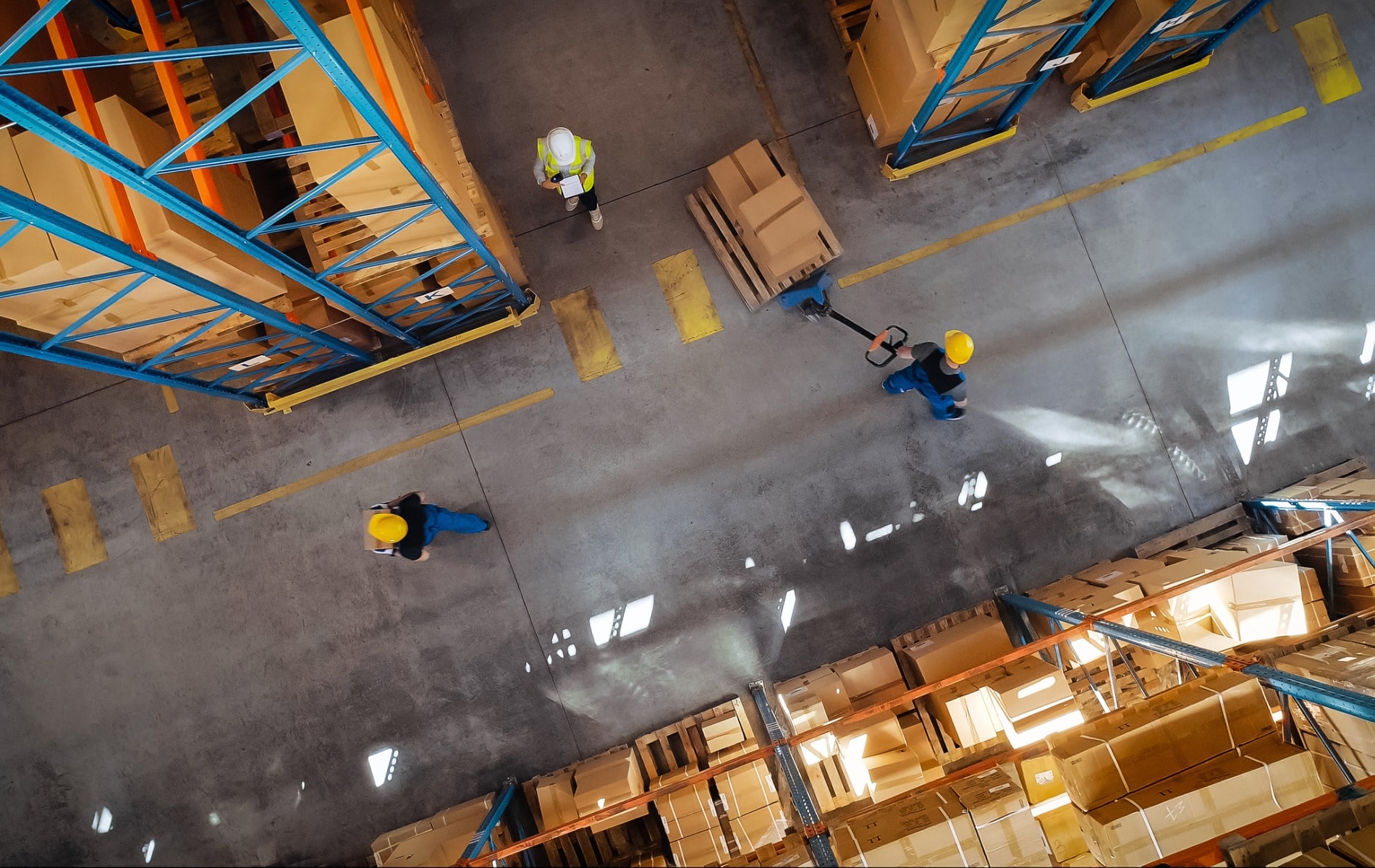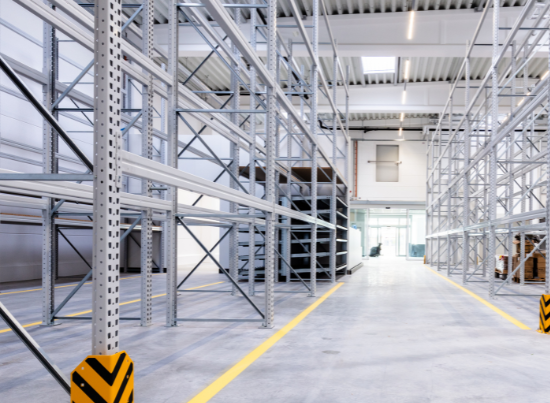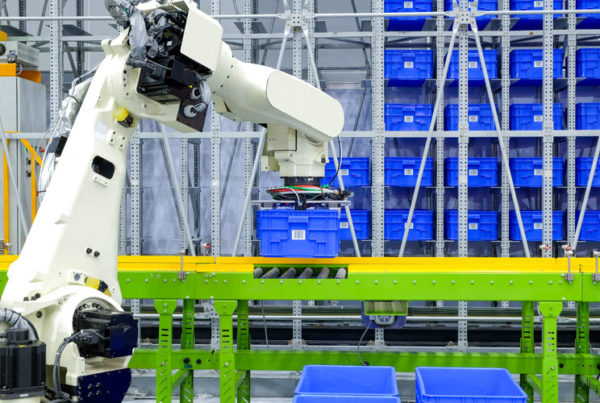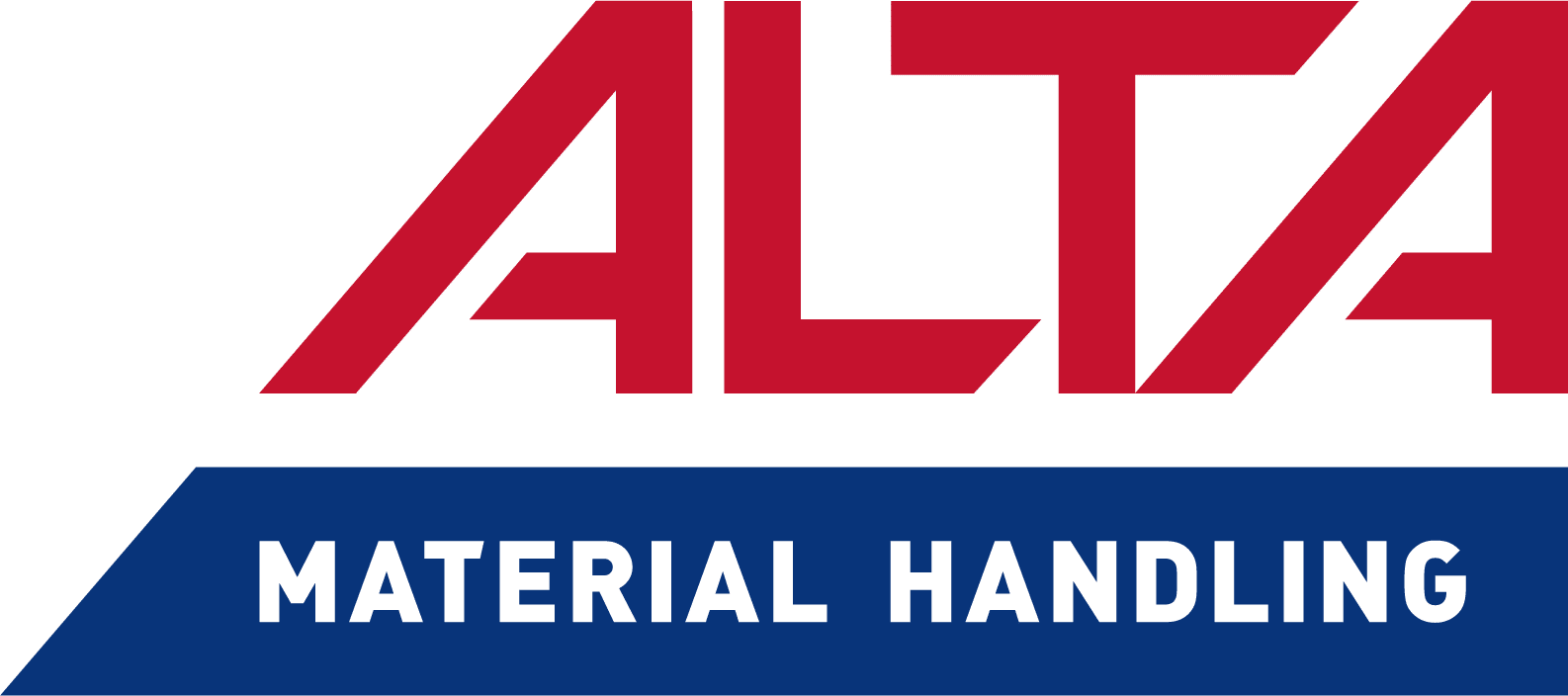Over the next five years, ecommerce sales are predicted to increase by $1.5 trillion. On its own, this would mean an increase in the demand for warehousing space. But ecommerce requires three times more space than traditional retailers. This, combined with the strategic increase in inventory to buffer against future demand shocks, is creating record-low vacancy rates and record-high leases, lease renewals, and new construction.
Experts predict this shortage in warehousing space will be offset by increased use in robotics and big data to engineer sites that maximize efficiency and storage density.
Buffer inventories meet demand shocks
Just-In-Time (JIT) logistics dominated fulfillment in the years before the COVID-19 pandemic. Under this model, the goal of fulfillment was to eliminate as much warehousing as possible and instead deliver goods “just in time.” Warehousing was perceived as a wasteful cost of doing business that industry leaders eliminated in favor of sophisticated order processing.
One upshot of the pandemic has been the shift in the perceived value of warehousing. More than a “wasteful” cost of doing business, it’s now seen as necessary insurance against demand shocks, limited supplies, and breakdowns in the global supply chain.
Not wanting to relive their difficulties, especially seen early in the pandemic, in filling shelves and meeting orders, retailers are increasing their inventories by 5-10% and are demanding their vendors do the same.
This increased inventory, kept on-shore and close to the consumers, will give retailers the flexibility and resiliency they need to face future shocks in demand.
Increased market forces
Retail forces were trending toward ecommerce for years before the 2020 pandemic – but the pandemic’s effect on the market is undeniable. In the US, ecommerce rose by nearly 32% in 2020. While lockdown orders and social distancing guidelines drove consumers to ecommerce in record numbers, experts predict that these new habits are here to stay even for once-hard to fulfill orders like grocery and other cold goods.
Globally, this shift toward ecommerce means that 1.5 billion square feet of new, well-designed warehousing space is needed. To meet the increasing demand for perishable goods, 100 million square feet of that will be for cold storage.
In the US alone, an additional 330 million square feet of premium warehousing space will be needed in the next five years.
A space-intensive market
Compared to traditional, brick-and-mortar retailers, ecommerce retailers tend to carry more SKUs, and more activity happens in their warehouses.
In a warehouse feeding a traditional retailer, pallets of goods are received, stored, and shipped.
As with traditional distribution, fulfillment in ecommerce requires receiving, slotting, picking, and packing goods in a warehouse.
But facilities designed for ecommerce deal more with mixed-and-matched eaches and pieces than with pallet loads. They handle quality assurance, claims and return procedures, damages, and everything else that a traditional retailer normally does in the storefront.
These different processes triple the square footage needed by ecommerce retailers compared to their brick-and-mortar counterparts. For every billion dollars in sales, ecommerce retailers need 1.2 million square feet of warehousing space.
Faced with the challenges of limited warehousing space and even a lack of premium locations to build, ecommerce companies will increase their capacity by engineering more efficient processes that rely on sophisticated technology.
Rising construction costs
As warehousing demand has increased, so have the costs for building – up by 25% in the first half of 2021. At the same time, rent rose nearly 10%.
These rising costs – coupled with limited space and regulatory challenges – are driving new developments away from urban centers.
As warehousing moves to less populated, more rural environments – and as the labor market becomes increasingly less stable – companies are turning to automation and robotics to supplement their workforce, maximize their cubic space, streamline their processes, and increase their output.
Smarter warehouse management means “smart” facilities
As the industry faces these new challenges brought by the global pandemic and shifting market forces, there is good news: we have the tools to adapt.
Modular, scalable robotic solutions – combined with robust warehouse management software – are driving the warehouse robotics industry through triple-digit increases to a projected $6.86 billion by 2025.
Leading these increases are reliable, versatile solutions like Autonomous Mobile Robots (AMRs). AMRs can be engineered, in both new constructions and remodels, as either a primary means of moving goods or as a way to supplement a workforce. They increase a facility’s safety and can better streamline its flow of product.
AMRs can be quickly and easily integrated into existing facilities and into nearly any floorplan. Flexible tools like AMRs have enabled the industry to modify its processes to meet rapidly changing demands.
While companies look to machines like AMRs to streamline the flow of goods through their facilities, they rely on sophisticated storage systems – like Automated Storage and Retrieval Systems (AS/RSs), Vertical Lift Modules (VLMs), and Carousel Picking Systems (CPSs) – to maximize their storage density.
Under the JIT logistics model, these dense storage systems were seen as a way to decrease the cost of warehousing.
Today, they are a way to increase storage density in an increasingly competitive retail market.
As the fulfillment industry adjusts to ecommerce and buffer inventories, automation and robotics will be the primary means of engineering facilities that are efficient enough – with dense enough storage and streamlined processes – to keep facilities competitive and profitable.
Want to learn how to gain more square footage without a major warehouse purchase? Contact us to talk details and strategies!
Increased efficiencies and operational expansions of e-commerce retailer.
PeakLogix streamlined Crutchfield’s facility to decrease labor costs and increase fulfillment, productivity and doubling shipping throughput. The new design achieved 25% gains in picking throughput and $250,000 annual savings.





